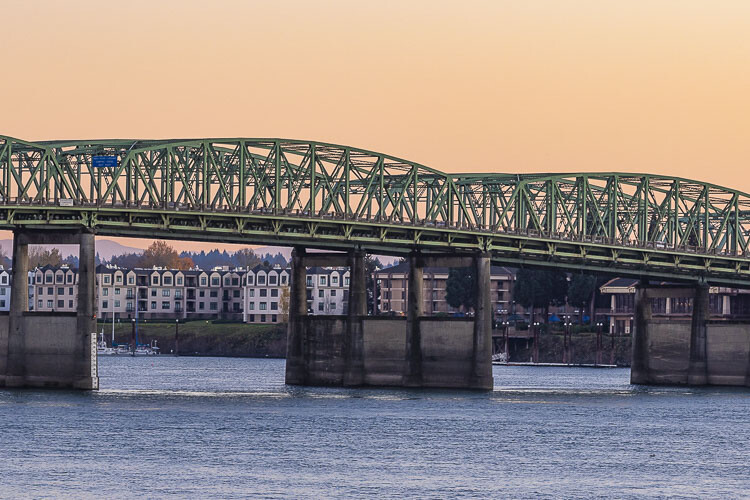
Warning is in effect until 11 a.m. Wednesday
The National Weather Service in Portland has issued a Flood Watch for the Columbia River at Vancouver affecting the greater Vancouver area. The Flood Watch warning will go into effect at 3 a.m. Sunday (June 12) and continue until 11 a.m. Wednesday.
Periods of heavy rain over the past 48 hours combined with melting snowpack in the mountains has resulted in rising river levels. Flows in rivers may increase quickly and reach critical levels. Residents and those with interests near the river should monitor rising water levels and be prepared for possible flood warnings.
Those who are in the watch area should remain alert to possible flooding. Additional information is available at www.weather.gov.
According to the Oregon Department of Transportation, travelers on Interstate 5 should expect more frequent lifts of the Interstate Bridge in the days ahead because of the increased level of the Columbia River.
The river level is expected to exceed 15 feet by early next week. The flood stage at that point on the river is 16 feet. That will mean longer lifts of the bridge spans as both upstream and downstream river traffic must use greater caution in navigating through the faster water.
The river level at the Interstate Bridge is generally six to seven feet.
Bridge lifts can sometimes be completed in six to eight minutes but lifts now are expected to last up to 20 minutes.
The increased river level has reduced the clearance at the high span, which is at the hump in the bridge at mid-river. That causes more marine traffic to use the lift span along the north side of the river. More lifts bring more delays on I-5.
Under maritime law, marine traffic has priority over I-5 highway traffic. However, no lifts are allowed during the morning and evening commute times weekdays from 6:30 a.m. to 9 a.m. and again from 2:30 p.m. to 6 p.m. except for federal holidays.
Recent rain throughout the Columbia River Basin has contributed to the high water. The Columbia River dams help regulate river volume.
The Columbia River reached the flood stage at the Interstate Bridge in 2017, when it reached 18 feet, and in 2011 when it reached 19 feet. The highest level in recent years came in 1996 when the river reached 24 feet.
The Interstate Bridge is jointly owned by Oregon and Washington and is operated and maintained by ODOT. The northbound span opened Feb. 14, 1917 and the southbound span July 1, 1958.
Also read:
- Opinion: Where do we go from here at Ridgefield School District?When it comes to the Ridgefield School District bond proposal, Heidi Pozzo believes the message should be clear: people are unhappy their perspective is not being heard and considered.
- Clock running on gathering signatures on three new initiatives to people of WashingtonBackers of three new initiatives to the people of Washington state have around eleven weeks to gather signatures, if they hope to qualify for the November ballot.
- Letter: Officer Mendoza stood up for public safetyClark County Public Safety Alliance Co-Founder Ann Donnelly provides context of support for Officer Andrea Mendoza.
- Juvenile arrested for felony assault of motherOn Thursday at about 8:48 a.m., Battle Ground Police Department officers were dispatched to an active assault with a weapon in the 1600 block of SW 4th Street in Battle Ground.
- Vancouver Fire responds to porch fireAt 10:20 a.m. on Friday, the Vancouver Fire Department was dispatched to 7319 NE 110th Ave. in Vancouver. First-arriving units found a back porch fire on a single-story house.
- Vancouver Fire responds to apartment building fireAt 2:02 a.m. on Friday (April 19), the Vancouver Fire Department was dispatched to the report of a fire at 306 NE 104th Ave in Maple Ridge Apartments.
- Clark County Sheriff’s Office releases critical incident video from 4/13/2024Following a deputy-involved shooting, the Clark County Sheriff’s Office, at the discretion of the sheriff, will release body-worn camera videos of the incident.











